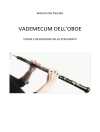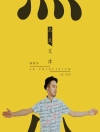This book introduces readers to a woman who truly persisted. Anneliese Landau pushed past bias to earn a Ph D in musicology in 1930. She then lectured on early German radio, breaking new ground in a developing medium. After the Nazis forced the firing of all Jews in broadcasting in early 1933, Landau worked for a time in the Berlin Jewish Culture League (Jüdischer Kulturbund), a closed cultural organization created by and for Jews in negotiation with Hitler’s regime. But, in 1939, she would emigrate alone, the fate of her family members tied separately to the Kindertransport and to the Terezín concentration camp.
Landau eventually settled in Los Angeles, assuming duties as music director of the Jewish Centers Association in 1944. In this role, she knew and worked with many significant historical figures, among them the composer Arnold Schoenberg, conductor Bruno Walter, and the renowned rabbi andphilosopher Leo Baeck.
Anneliese Landau’s Life in Music offers fresh perspective on the Nazi period in Germany as well as on music in southern California, impacted as it was by the many notable émigrés from German-speaking lands who settled in the area. But the book, the first to study Landau’s life in full, is also a unique story of survival: an account of one woman’s confrontation with other people’s expectations of her, as a woman anda Jew.
Lily E. Hirsch is the author of
A Jewish Orchestra in Nazi Germany: Musical Politics and the Berlin Jewish Culture League.
Tabla de materias
Preface: The Black Thread
PART 1
Standing Up
Loss and Gain
Her Belin
On the Air
PART 2
An End and a Beginning
The Jewish Culture League
Jewish Music in Nazi Germany
Kristallnacht
Kindertransport
PART 3
Leaving Again
Judaism in Music Revisited
Forbidden Music
The Pull West
PART 4
The Jewish Community Center
International Composers
Making Music After War
A Cold War in the Sun
Spotlighting Composers
Back to Europe
PART 5
Going Place
Valley of the Dismissed?
At Her Desk
In Memoriam
Conclusion: ‘I Was There’
Bibliography
Index












